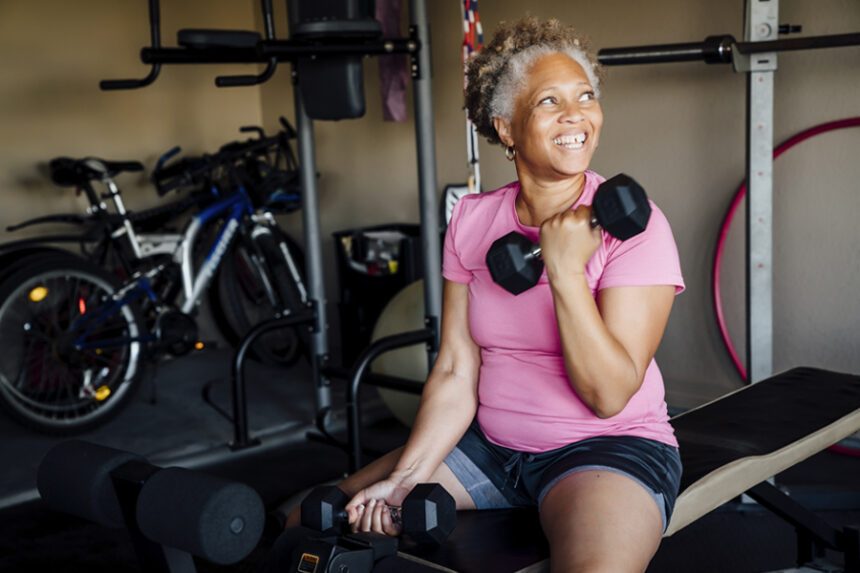If you’re nearing menopause and your menstrual cycles are coming to an end, you may be expecting hot flashes and night sweats. You might also know that menopause weight gain is possible or that mood changes can accompany fluctuating hormones.
But you also need to think about your bones.
“As women age, their bones become less dense due to hormonal changes after menopause. With enough loss of bone density, the condition of osteoporosis develops,” says UNC Health family medicine physician Margaret Helton, MD. “Women need to be concerned about osteoporosis because it increases the risk of fracture if you fall.”
Osteoporosis is associated with lower levels of estrogen in the body after menopause. So, is replacing that estrogen through hormone therapy an appropriate plan? Besides treating hot flashes, does hormone therapy also prevent osteoporosis? Read on to find out.
Is hormone therapy recommended for osteoporosis?
Hormone therapy with estrogen has a positive effect on bone health and has been shown to reduce the risk of fractures. However, “absent significant menopausal symptoms, estrogen is not a first-line treatment for osteoporosis,” Dr. Helton says.
“The best candidate for hormones is a woman who is having significant menopausal symptoms, such as hot flashes that interfere with work or sleep,” she adds.
The decision to pursue hormone therapy should be made after discussing the risks and benefits with your doctor. Hormone therapy slightly increases your risk of blood clots, heart attack, stroke and breast cancer, but it has the benefit of reducing hot flashes and night sweats.
If you are experiencing debilitating menopausal symptoms, hormone therapy provides extra benefits for bone health, but if you are concerned solely about osteoporosis, the risks outweigh these benefits, Dr. Helton says. Plus, the chances of complications increase the longer you are on hormone therapy and the older you are.
Even when you opt for hormones, your doctor may advise tapering off them after a few years.
“After you stop taking estrogen, you can expect the normal loss of bone density and the natural process of aging to catch up,” Dr. Helton says. “Hormone therapy does not have a long-lasting effect after it is discontinued, unlike some other medications for osteoporosis.”
What other treatments are available for osteoporosis?
Your doctor may recommend medication if your bone-density screening indicates osteoporosis, if you’ve had a fracture in your back or hip, or if you’ve had long-term use of a medication known for reducing bone density, such as steroids.
The main point of taking medications is to lessen the risk of fracture in the event of a fall or accident.
Your doctor will probably recommend drugs known as bisphosphonates as a first step.
It’s the standard of care to start with a five-year prescription of Fosamax (alendronate) or Boniva (ibandronate), Dr. Helton says.
Unlike hormone therapy, these medications provide a benefit for several years after you stop taking them. That’s why doctors often recommend discontinuing use after five years, with annual monitoring of your bone density after that. Dr. Helton says that if subsequent studies reveal a decrease in bone density, it may be appropriate for you to restart bisphosphonates or to consider treatment with a different medication for osteoporosis.
Those medications include:
- Prolia (denosumab) is a monoclonal antibody shot that is administered every six months. It is a lifelong treatment; if you stop it, you will experience a rebound fracture risk and will need to take a bisphosphonate.
- Evista (raloxifene) is a selective estrogen receptor modulator, or SERM. This type of drug acts on estrogen receptors in the bones, slowing bone loss. The anti-estrogen effect can also reduce breast cancer risk, though the drug can cause hot flashes and increase the risk of blood clots.
- Forteo (teriparatide) is a daily shot for two years for people with severe osteoporosis. This drug can help to rebuild bone, unlike the other medications, but it is expensive.
What can I do to reduce my risk of osteoporosis?
Everyone can make lifestyle adjustments to reduce their risk of osteoporosis.
“The most important thing is to stay physically active with weight-bearing exercise and strength training,” Dr. Helton says. “Women also need to ensure they have enough calcium and vitamin D, ideally through their diet.”
Dairy products, leafy green vegetables, nuts and fortified juices and cereals are good sources of calcium, while salmon and fortified milk, yogurt and orange juice contain vitamin D. Exposure to sunlight also helps your body produce vitamin D. Some people need a dietary supplement of vitamin D.
Quitting smoking and cutting back on or abstaining from alcohol consumption are also important for reducing the risk of osteoporosis.
You should receive your first bone-density screening at age 65 and talk to your doctor about prevention or treatment options.
“Work with your clinician to find the right plan for you,” Dr. Helton says. “Some women want to be aggressive with medications because of a family history of osteoporosis, while other women are uncomfortable with medications but may agree to regular monitoring and nonpharmaceutical treatments such as lifestyle changes. There needs to be individualized counseling to find the option you’re comfortable with.”
If you’re concerned about your bone health, talk to your doctor. Need a doctor? Find one near you.

